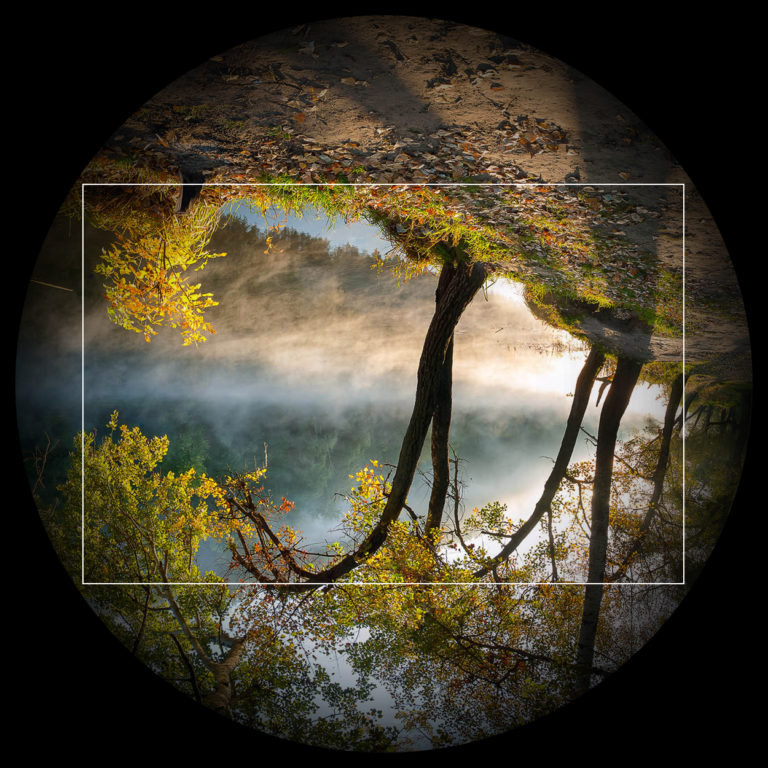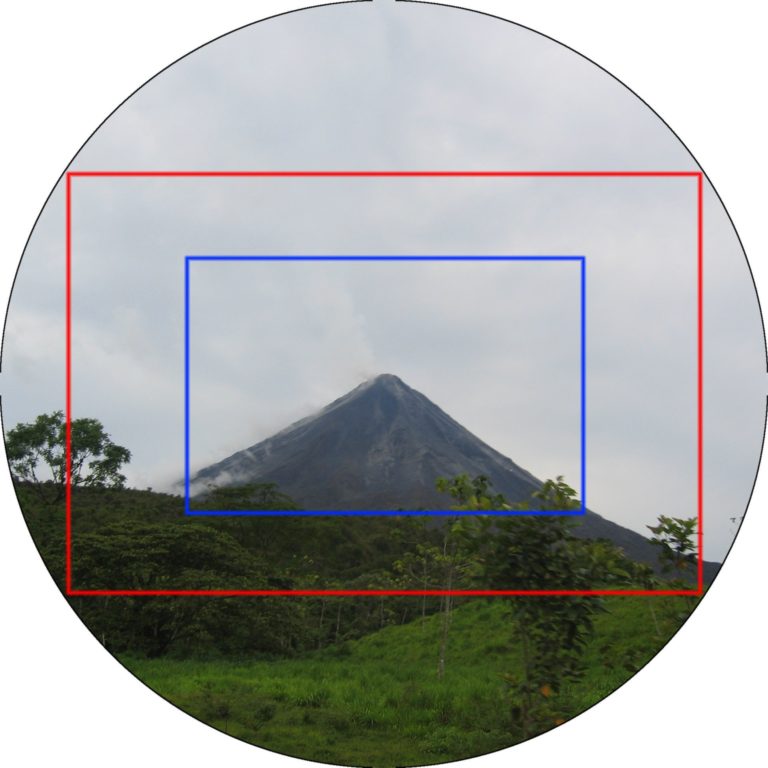In our blog post – Canon Cameras and Lens Mounts – we saw, there are two different types of cameras based on sensor size. Full Frame cameras come with a full frame sensor (35mm). Crop Sensor cameras have smaller sensors.
When we use a crop sensor camera, the photos look cropped in, compared to a full frame camera. In this post, we will try to understand why that happens and what else we need to keep in mind about the crop factor.
Image Circle and Sensor Size
Before we can dive further into crop sensors and crop factor, let’s go through the connection between two very important concepts – image circle and sensor size. A lens collects light and projects those light on the camera sensor. That’s how an image is created. The lens forms a circle of light inside the camera. This is called the image circle.
The sensor translates this image circle into an actual image. The sensor is rectangular shaped and the image circle is circular. It’s necessary that the image circle covers the whole sensor otherwise there will be darker parts in the photo – in the corners more specifically. This effect is called “Vignetting”.
Let’s visualize these two concepts with the help of this nicely illustrated image from Wikipedia.

See how the image circle covers the sensor? That’s how it’s supposed to be.
Crop Sensor and Image Circle
Now what would happen if the sensor size was smaller with the same lens mounted on? We would have a smaller image from the same circle, right? The image would be “cropped” compared to the full frame equivalent. This is the crop effect on crop sensor cameras.
Let’s look at this Wikipedia image to visualize that for real –

The red rectangle is how it would have looked on a full frame sensor. And because of the sensor being smaller, we now get a cropped version of that same image on a crop sensor. Full frame cameras can capture more area from the same lens than a crop sensor. This is why full frame cameras also have a larger field of view.

The red indicates a 35mm full frame sensor – you can see how the red lines create a larger / wider field of view and covers the entire tree. And the black lines indicate a crop sensor and you can see how it creates a cropped view.
Full frame sensor == wide view
Crop sensor == cropped view
Canon’s Crop Factor
A full frame sensor would be 36mm x 24mm . Canon’s crop sensors are 22.5mm x 15mm. If you look at the numbers – 36/22.5 = 1.6, 24/15 = 1.6 meaning the image will be around 1.6 times cropped on both sides. This is the crop factor for Canon crop sensor cameras.
We have to use this crop factor in different scenarios to determine the full frame equivalents while using a crop sensor camera from Canon. Because we will always compare against full frame cameras as they are the standard.
Crop Factor and Focal Length
As we have seen above, the crop factor generates a cropped image, reducing the effective field of view. Using the same lens, on a Canon crop sensor camera, we get an image that is 1.6 times cropped. What does this mean in terms of focal length and the field of view?
Focal length dictates the field of view. A longer focal length generates a smaller field of view as we zoom in and a wider field of view as we zoom out to use a shorter focal length. Or we could say a smaller field of view is the sign of a longer focal length.
Since the image on a crop sensor camera is 1.6 times smaller, you can probably guess the effect of crop factor on the focal length already. Remember – smaller field of view means longer focal length. The same lens on a crop factor sensor would produce a field of view equivalent to the field of view produced by a 1.6 times longer focal length on a full frame camera.
Let’s say we’re using the Canon EF 50mm F/1.8 lens. The image it produces on a full frame camera would have the standard field of view of a 50mm focal length. But when we use it on a crop sensor camera, the image will be cropped 1.6 times, so the resulting field of view on this crop sensor would become equivalent of 50 x 1.6 = 80mm on a full frame camera.
50mm on crop sensor = 80mm on full frame
You have to multiply the focal length of a lens by the crop factor when you mount it on a crop sensor camera.
No matter what kind of lens you use – EF, EF-S, EF-M, RF etc, the focal length is always written in comparison with a full frame camera. So you always have to multiply. Even if the lens is made for crop sensor cameras (EF-M or EF-S), the focal length is always written as if it would used on a full frame camera.
So the kit lens that I had with my Canon M50 – 15mm-45mm? Yes, it’s not actually a 15mm or 45mm, you have to multiply it by 1.6.
Crop factor on Aperture
Since the smaller sensor can’t take in as much light as a full frame sensor can from the same image circle, we also need to apply the crop factor to the aperture. A full frame camera can take in more light, so the aperture doesn’t need to open as wide for the image to be well exposed. But since the crop sensor gets less light, it needs to open the aperture wider to get equivalent light in and get the same level of well exposed image.
f/2.8 on a crop sensor would be roughly equivalent to f/4 on a full frame sensor – because the aperture would need to be more open on a crop sensor to gather the same amount of light.
Pingback: A Walk By the River Rupsha - Masnun | Photography
Pingback: Low Light: Comparing My Fast Lenses - Masnun | Photography